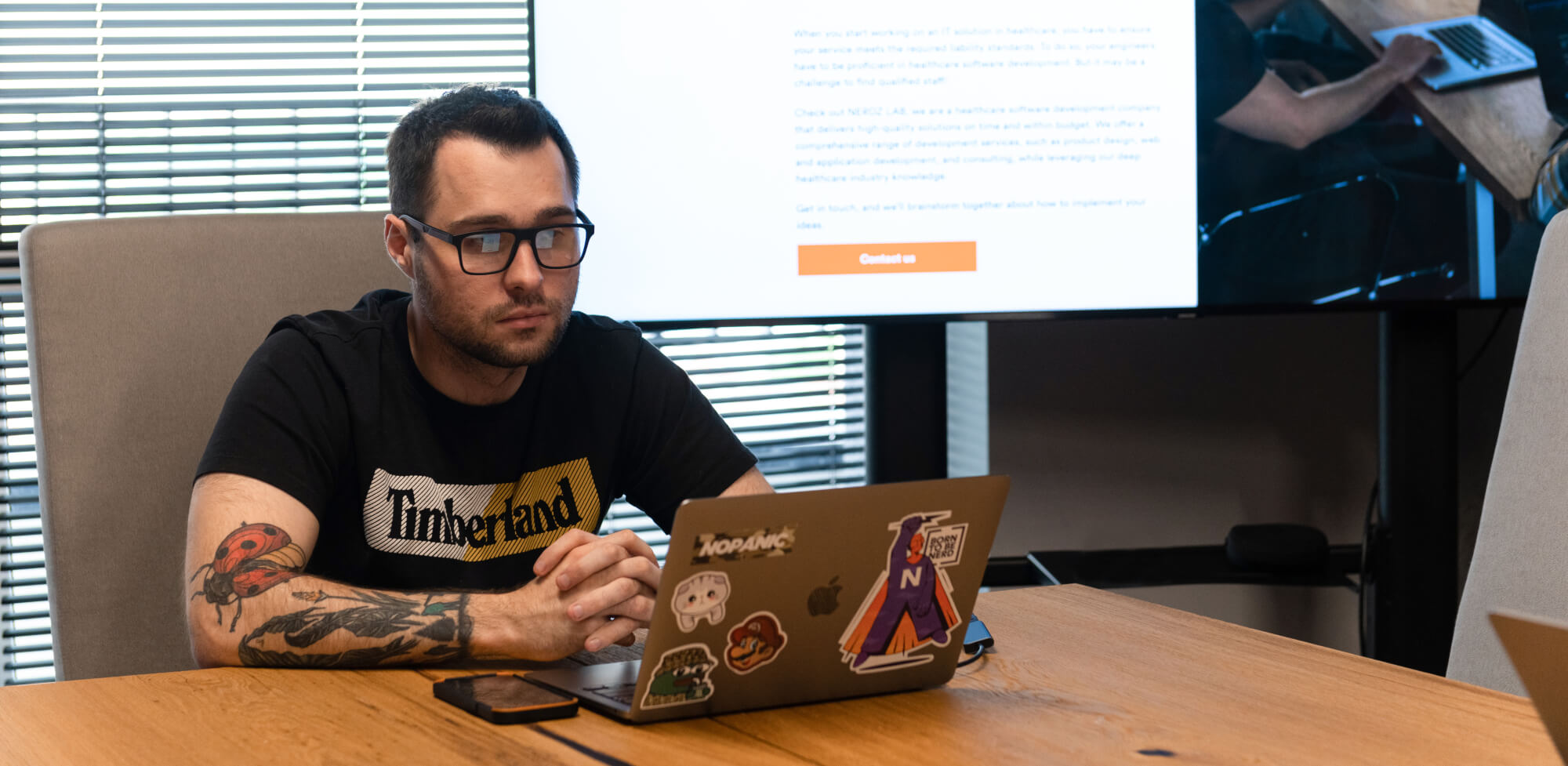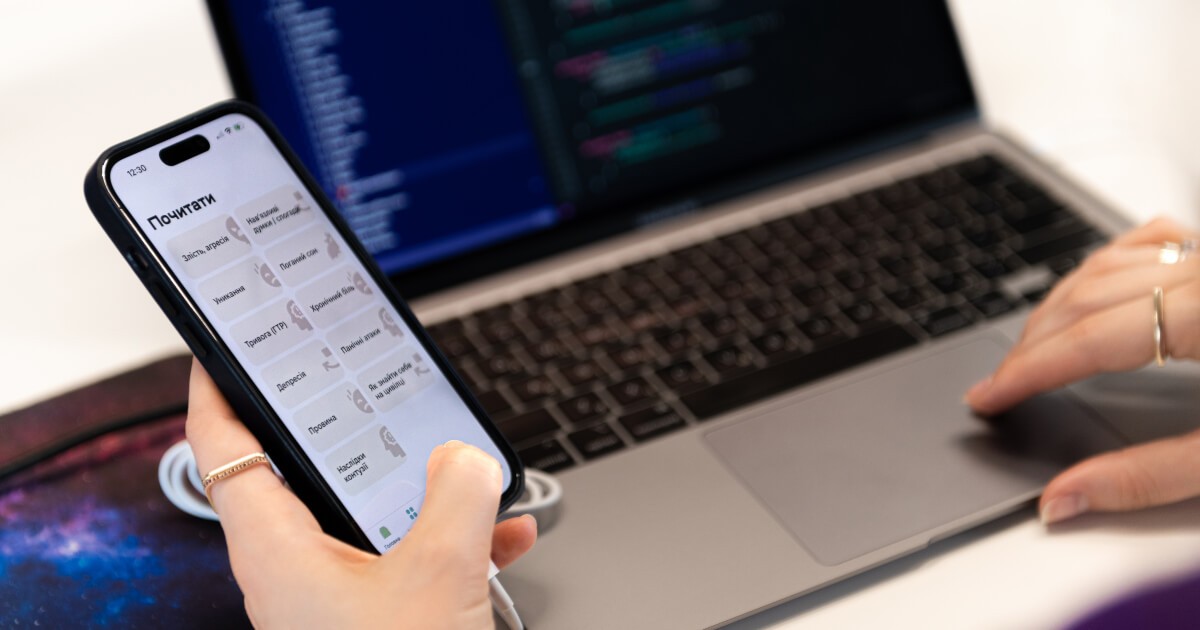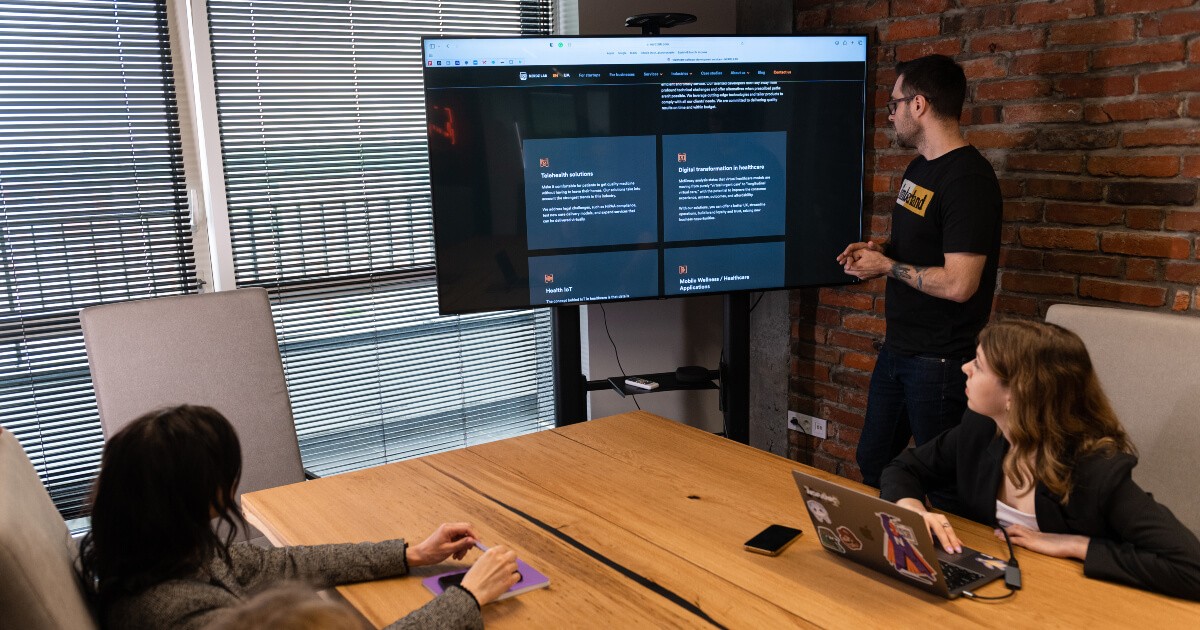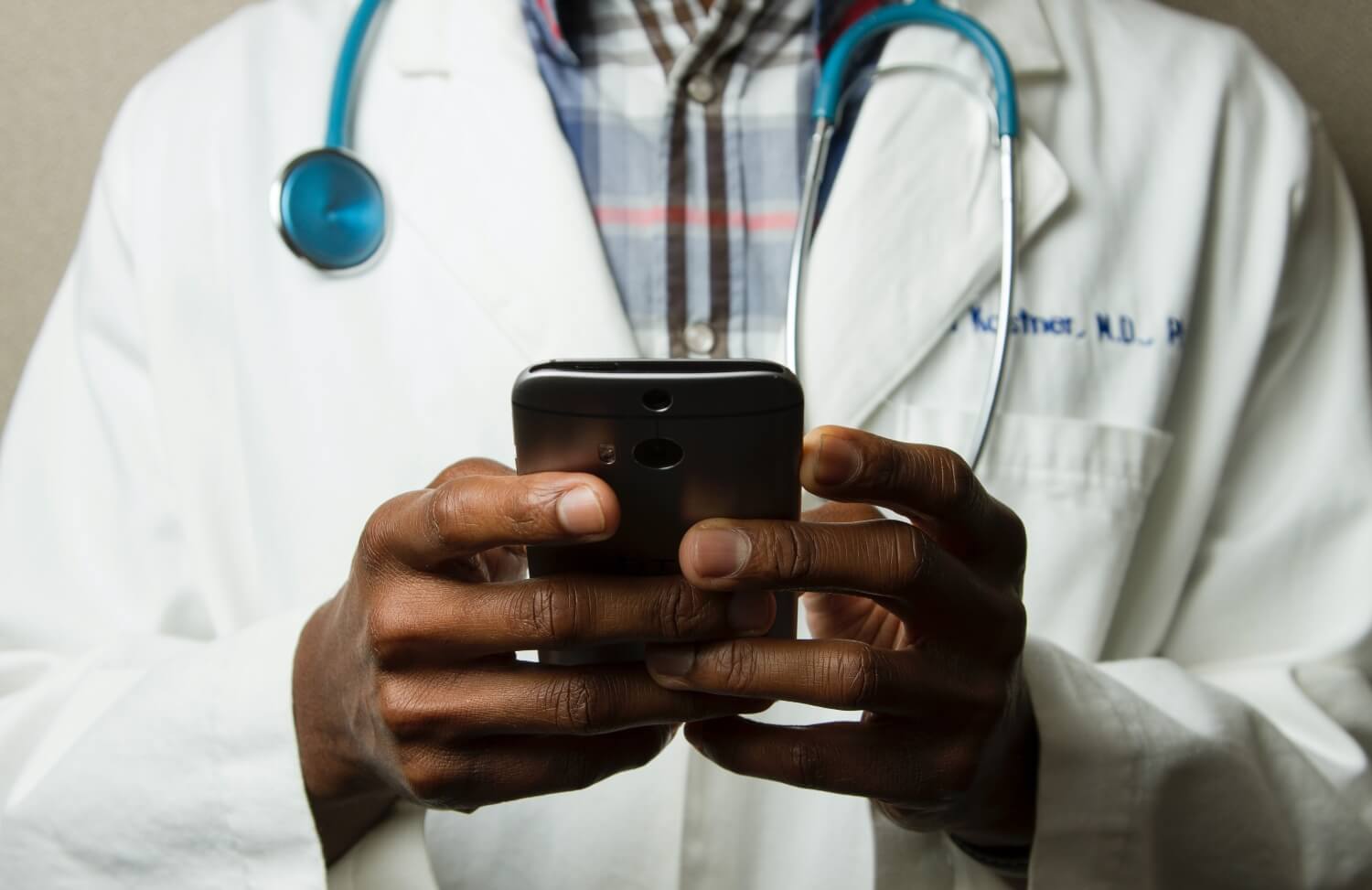От халепа... Ця сторінка ще не має українського перекладу, але ми вже над цим працюємо!

Best practices for a successful healthcare mobile app development — Make your investment worth it

Volodymyr Khmil
/
CEO
8 min read
Article content:

Introduction
Investor funding in digital health shot up to $45 billion in 2021, double 2020 figures and the highest since 2010. And investments seem to be paying off, with 52% of American adults using telemedicine consultations in 2022.
Unsurprisingly, the global digital health market is also on an upward trend. Market size is expected to grow from $175 billion in 2019 to $660 billion by 2025 — an estimated CAGR of nearly 25%. Mobile healthcare (mHealth) apps, in particular, are booming, fueled by the constant rise of smartphone use and internet connectivity and the popularity of personal data analytics.
It makes sense to ride this growth. If you’re thinking of building your own digital healthcare solution, we’re here to help. In this article, we’ll cover the three main ingredients of a successful healthcare mobile app development and our tips for managing your investment well.
Clarifying project scope and features
Successful healthcare app development all begins with a clear project scope, meaning you’ll need to draw up a complete list of requirements, features, and deliverables. This will help you keep to your delivery schedule and budget.
But before you craft your project scope, you need to be clear about what you want to achieve — in other words, your app’s purpose and goals. For example, who is your market audience? There are two main types of healthcare apps:
- Professional solutions. You might choose to build a healthcare app that enables doctors to remotely monitor patients’ health. You can link this to hospital management software or other software for admin tasks in a medical facility.
- Patient solutions. On the other hand, you might choose to leverage smartphones and wearable devices to create an app that allows patients to collect and share their health-related data. You can also tap into the growing trend of virtual consultations and take everyday transactions like appointment scheduling and filling prescriptions online.
Once you’ve decided on your audience, it’s time to make a list of the key features you want to include in your mobile healthcare app. Let’s take a look at what they could be.

Video chat
Telemedicine enables virtual consultations between patients and medical professionals. It’s an ideal set-up for patients in busy cities and remote areas. You’ll need to integrate video chat into your healthcare app to make virtual consultations possible.
Appointment scheduling and reminders
A scheduling tool allows patients to find health professionals in a specific region or facility and set up an appointment online. A typical tool includes a payment portal with an interactive calendar that shows doctor availability and allows patients to choose from specific appointment dates or slots. It may also include reminders and notifications for upcoming appointments.
Prescription management
Regular medication intake is crucial to patient recovery. With a prescription management tool, users can create a profile, generate a medicine list, track their medications, set reminders for taking them, and request a prescription renewal.
Health monitoring
Integrated health monitoring lets physicians remotely monitor patient data such as blood pressure, heart rate, and blood glucose levels. This is particularly helpful for patients with a chronic illness that requires data tracking.
Electronic health record (EHR)
Electronic health records (EHRs) bring paper charts and records online. An EHR compiles vital information such as medical history, treatment plans, allergies, and test results. Integrating EHRs automates and streamlines workflows for healthcare providers, easing up their administrative load.
Health education and information
You can fulfill your mission to educate patients and enable them to look after their own health with informative content. For example, you can provide a knowledge base of health articles and videos.
Emergency response
Your app should give help when patients need it the most. With a built-in emergency response feature, your users will be able to connect with appropriate responders and get immediate assistance in urgent situations.
Check out this product design case study for medicine ordering project >
Integration with wearables
Integrating your app with wearable devices leverages data monitoring for both wearers and medical professionals. Fitness trackers and smartwatches motivate healthier lifestyle choices. They also allow health professionals to gather more comprehensive data, monitor patient conditions, and personalize treatment.
Medical billing
The professional software gives hospitals and clinics a convenient platform for generating bills, collecting payments, and managing invoices. Your tool should also make paying medical fees easier for patients, for example, with an integrated payment portal.
Electronic prescription
An electronic prescription feature allows healthcare professionals to generate prescriptions online and send them to pharmacies. This improves the quality of prescriptions, reduces medication errors, and improves patient safety. The tool also makes prescription renewals fast and convenient.
These are the main features of healthcare software today, but you’re unlikely to need all of them in your first release. Remember that the features you include in your product will determine its complexity and the cost of healthcare application development.
Your goal is to avoid spreading your resources too thin, so choose your core functionalities carefully and drop unnecessary features. You’ll also need to work with a competent healthcare app development company, as mistakes can be costly.
In the next section, we’ll guide you through the process of finding the right development team.

See also: Accessibility in mobile development: Creating an app for everyone
Choosing the right healthcare mobile application development team
Working with the wrong development team can lead to errors and unnecessary costs. The following tips will help you hone in on the right vendor to work on your healthcare app.
A proven track record
Healthcare app development entails working with sensitive data and complex infrastructure and integrations. These are things you can’t entrust to random freelancers or junior developers — look instead for a healthcare app development partner with a proven track record. Ideally, they should have extensive experience in building complex apps.
A vendor with specific expertise in healthcare will be an even better option. Look out for industry recognition and reviews on third-party sites like Clutch and G2.
In-house vs. outsourced development team
Developing in-house is your best option if you’d like to have full control over the health app development process and you have the resources to run your own IT team. But if you’d rather pass the reins to industry experts, outsourcing is the solution.
The outsourcing path is a proven direction to ensure high quality and shorten time-to-market. Plus, you often get all that at a reasonable price. If you hire health app developers abroad, you can avoid hefty taxes and hourly fees, and when you have proven experts on your project, you don’t need to worry about costly mistakes and scope creep.
If you choose to outsource healthcare software development, you’ll have to decide where to take your business. Your top options are South Asia, Eastern Europe, and Latin America. In aspects like access to the talent pool, level of expertise, and similarity of cultural and business ethics, Eastern European countries often are praised as the best fit.
See also: Why bring your project to Ukraine?
Factors that influence the cost of healthcare mobile app development
A successful development project creates a great product within your budget. So how do you know what to expect price-wise? Here are the main things that make the difference.
Required specialists
One of the top factors that determine the cost of healthcare development is the type of specialists in your team. Typically, you’ll need the following people:
- Business analysts to study the market and evaluate the project requirements
- Project/product managers to analyze app usage and trends and facilitate the development process
- UX/UI designers to map the customer journey and create prototypes
- Software engineers to architect and build your app
- Quality assurance specialists to conduct regular app testing
The number of specialists and their seniority level will vary depending on your requirements but should be wisely adjusted to fit your budget.
See also: How much does it cost to create an app? [7 calculation formulas with examples]
App complexity
The number of features you include in your healthcare app will also significantly influence its development cost. For example, an app with simple scheduling and notification features will be cheaper than a solution complete with EHR, telehealth services, and health monitoring.
Data security
Security and compliance requirements will also take up your budget. Because healthcare apps handle critical patient data, you’ll have to implement stringent security measures, including user authentication, encryption, and data loss prevention. You may also need to comply with regulations like HIPAA (Health Insurance Portability and Accountability Act) and GDPR (General Data Protection Regulation).
See also: Security in Android: How to build a safe application
Third-party APIs and services
Your app will need third-party APIs to implement features like video conferencing and chat messaging, enable subscriptions and payments, as well as ensure hosting and remote database connectivity. You’ll also have to cover hosting, app store, maintenance, and VoIP (Voice over Internet Protocol) subscription fees.
All these things add to your development costs, but with careful planning, you can avoid going over budget and see your project through to completion. A professional development team will ensure you work optimally with the right resources to complete the tasks.
Gentle reminder: whether you choose to outsource or to develop in-house, as a product owner, you’ll always have to be involved. Project growth largely depends on how near to your heart you keep the product you’re building. If it is near, you probably wouldn’t even want to let your team do everything without you. Be sure that healthcare app development is a fascinating yet challenging road ahead.
Tips for managing your investment
How can you stay involved in the development process and ensure your project makes the most of your investment? Follow these tips to get started.
- Plan your budget. Work closely with your development team to determine the features you’ll include in the first version of the app, then draw up the cost. Keep the app as minimal as possible by prioritizing only core features. Don’t start working on any functionality unless you have a full picture of how much it’s going to cost to build, and remember to account for sales and marketing expenses after the development is completed.
- Use agile development methodologies. Divide the project into separate development phases (such as MVP, full product, and version iterations), then decide on the best project management framework to use throughout the development process. For example, you can start out using Kanban and slowly switch to Scrum as the project gets more complex.
- Reduce costs wherever possible. You can cut costs by avoiding unnecessary features, reusing code, and leveraging open-source or third-party technologies. Also, make sure you’re only adding functionalities well worth the effort. For example, you can do away with phone authorization during login as it takes a lot of time to develop but has minimal user adoption — most people prefer social authorization.
- Don’t neglect app maintenance and updates. Don’t forget that you’ll need maintenance and updates after your product has been released. A support contract that offers continuous updates in small increments will be better for addressing user requests as they arise. Alternatively, you can collect and address a list of updates simultaneously, which may bring a faster result.
- You’ll also need to prepare for operating system changes. The latter may cause unpredictable system behavior and require additional engineering efforts. A notable example is the introduction of Dark Mode, which is an appearance style for iOS apps. As soon as this much-in-demand feature was introduced, those apps that didn’t support it immediately turned unattractive, often with numerous broken visuals.
In summary, don’t just give free rein to your development team. With these simple steps, you can stay on top of the development process and ensure everything is on track.

Conclusion
The time to ride the growth of the global digital health market is now. With proper planning, you can be well on your way to building a successful healthcare app. This means:
- Having a clear picture of your project scope and core features
- Knowing the likely development costs
- Finding a reliable software development partner who can bring your product to life within your budget
We’re a team of 80+ professionals with a proven track record in project development. If you’re ready to turn your ideas into reality, contact NERDZ LAB to discuss your idea and get a project estimate.





